Self-cleaning aquariums made easy
The Rise of the Self-Cleaning Aquarium
In recent years, aquarists have seen a dramatic shift towards low-maintenance setups. Maintaining an aquarium used to mean hours of scrubbing, frequent water changes, and constant monitoring of water parameters. Today, technology and better understanding of natural ecosystems have made it possible to enjoy aquatic life with minimal effort.
The self-cleaning aquarium is at the forefront of this trend. By combining plants, fish, substrate, and beneficial bacteria, these systems maintain balance naturally, reducing waste buildup and keeping water quality stable. This innovation allows even beginners to experience the beauty of a thriving tank without daily labor.
In addition to convenience, these aquariums promote better fish health. By mimicking natural ecosystems, they reduce stress, encourage natural behaviors, and create an environment that can sustain itself for weeks or months. For hobbyists with busy schedules, this combination of aesthetics and functionality is ideal.
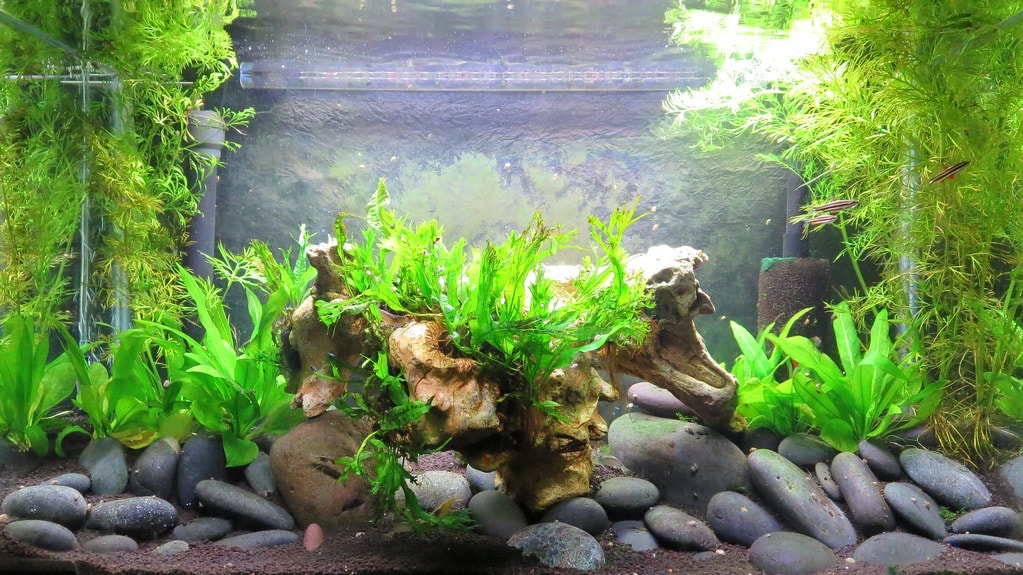
Advantages of Owning a Self-Cleaning Tank
A low-maintenance aquarium provides many benefits beyond convenience. Fewer manual cleanings mean less risk of accidentally disturbing fish or upsetting the water chemistry, which can stress or harm aquatic life.
A self-cleaning tank saves time and effort while maintaining consistent water conditions. Proper filtration, plant selection, and compatible fish species work together to handle waste naturally, so you spend less time on maintenance and more time enjoying your aquarium.
Furthermore, these systems can be educational and therapeutic. Observing how plants absorb nutrients, bacteria process waste, and fish interact teaches valuable lessons about ecosystems, biology, and environmental balance, making the aquarium both enjoyable and informative.
Understanding the Self-Cleaning Aquarium Ecosystem
The secret to a successful aquarium lies in the ecosystem it supports. Fish produce waste, plants absorb nutrients, and beneficial bacteria break down harmful compounds. Together, they form a self-regulating system that minimizes the need for human intervention.
A self-cleaning aquarium ecosystem relies on balance between all its components. Fast-growing plants prevent algae blooms, while bacteria maintain nitrogen cycles, and carefully chosen fish help control waste and algae naturally.
Understanding this ecosystem helps hobbyists make better choices for their tanks. By selecting appropriate species and equipment, they can create a sustainable environment that promotes growth, maintains water clarity, and reduces the likelihood of common aquarium problems.
Creating a Self-Cleaning Fish Tank with Plants
Plants are essential for nutrient management and overall water quality. Fast-growing species like hornwort, water wisteria, and Java moss absorb nitrates, phosphates, and other excess nutrients, naturally reducing algae growth.
A self-cleaning fish tank with plants leverages these natural processes. By carefully combining the right plants with compatible fish and proper filtration, aquarists can achieve a balanced ecosystem that thrives with minimal intervention.
In addition, aquascaping contributes to the tank’s health and aesthetics. Strategic plant placement not only creates hiding spots and territories for fish but also maximizes surface area for beneficial bacteria to colonize, further supporting the self-cleaning process.
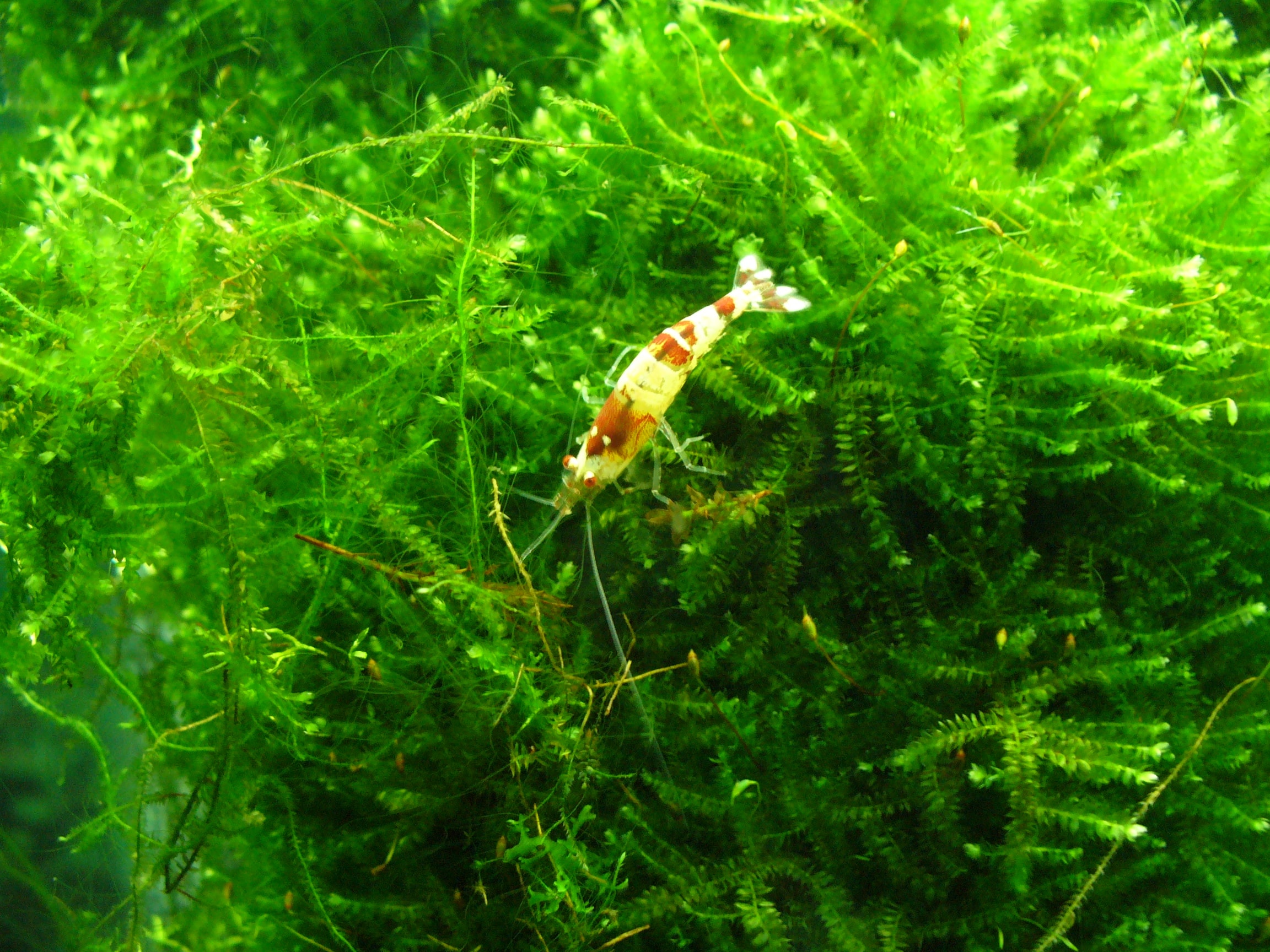
Tech-Savvy Options: The Auto Cleaning Fish Tank
Modern technology has transformed aquarium care, allowing hobbyists to focus on enjoyment rather than maintenance. Sensors, automated filters, and timed feeding systems help maintain consistent water conditions effortlessly.
Investing in an auto cleaning fish tank can be particularly useful for busy individuals or those new to the hobby. These systems monitor water quality and automatically adjust filtration or water levels, keeping the tank stable and healthy.
Combined with live plants and compatible fish, automation enhances the natural balance of the aquarium. It ensures that the self-cleaning mechanisms work efficiently, reduces human error, and allows the tank to function almost independently while remaining visually stunning.
Essential Equipment for a Self-Cleaning Tank
A successful self-cleaning tank begins with the right setup. Choosing the proper filter is critical, as it helps remove fish waste and maintain water quality. Many hobbyists prefer canister filters or sponge filters depending on the tanksize and fish species.
Lighting is another essential component. Using LED light promotes plant health and supports aquatic plants, whether in a planted tank or a low tech setup. Proper water flow ensures nutrients reach all plants, and surface agitation improves oxygenation, benefiting both fish and bacteria colonies.
Substrate choice, such as sand, gravel, or specialized planted substrates, impacts self cleaning efficiency. Live plantsplanted in sand help absorb waste and nutrients, while floating plants reduce algae by limiting light penetration. Combining the right heater, filter, and LED light with an appropriate setup creates a balanced ecosystemthat minimizes maintenance.
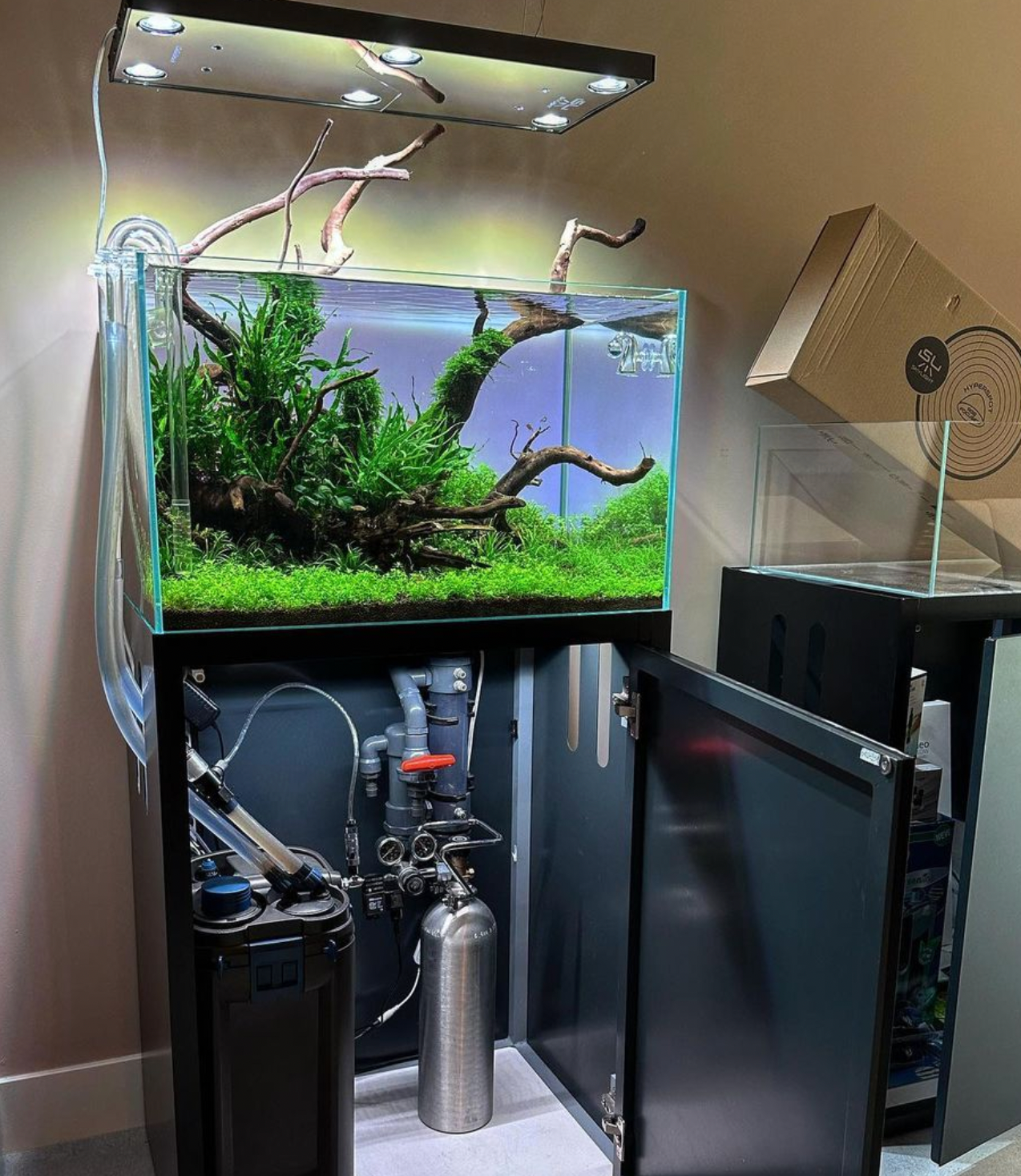
CO2 Injection and Gear for Healthy Plants
For a thriving planted tank, a proper CO2 injection system is essential. Live plants rely on CO2 to optimize plant health and absorb nutrients, which supports a self sustaining aquarium. Without adequate CO2, plants may weaken, leading to excess algae growth and poor water quality.
A typical CO2 setup includes a pressurized cylinder, regulator, solenoid valve, diffuser, and tubing. Careful monitoring of ammonia levels, bacteria, and water flow ensures the system does not disrupt fish. LED light intensity and duration should complement CO2 injection, promoting photosynthesis while preventing excessive algae blooms.
In addition, adding floating plants helps control surface light exposure and provides shelter for shrimp and smaller fish. Together, live plants, aquatic plants, CO2, heater, and LED light create a self sustaining aquarium that maximizes the self cleaning feature, reduces maintenance, and maintains balanced ecosystem dynamics. Proper system design allows fish and shrimp to thrive while plants absorb fish waste and nutrients, stabilizing ammonia and supporting bacteria growth.
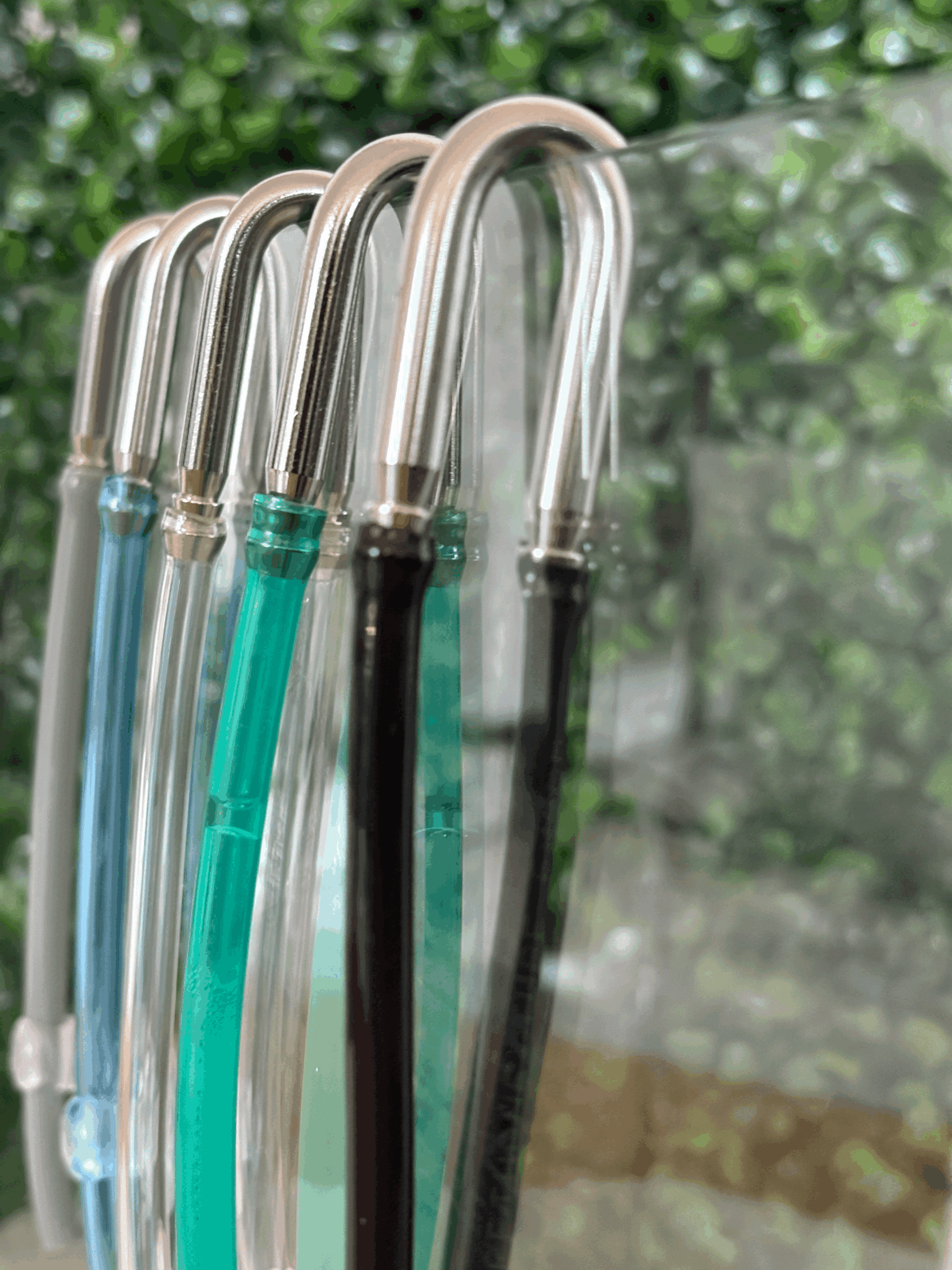
Choosing the Right Substrate and Gravel
Selecting the proper substrate is crucial for a self cleaning tank. Sand is ideal for certain fish, especially bottom dwellers, because it prevents waste buildup in crevices. For planted tanks, nutrient-rich aquatic plants substrates support live plants growth, enhancing plant health and creating a self sustaining aquarium.
A combination of sand and gravel allows bacteria colonies to thrive, which helps process ammonia and reduce maintenance. Fish interacting with the substrate stir up nutrients, supporting plants and maintaining water quality. Shrimp also benefit by grazing on biofilm, further supporting the self cleaning feature of the tank.
Proper water flow across the surface and substrate ensures nutrients circulate evenly. Incorporating floating plantscan shade the surface, reducing algae growth and supporting balanced ecosystem stability. With the right filter, heater, and LED light, the setup becomes a low-effort, highly efficient self cleaning tank for fish, shrimp, and plants.
Selecting Plants for Self-Cleaning Efficiency
Choosing the right plants is essential for a thriving self cleaning fish tank. Fast-growing aquatic plants absorb excess nutrients, limiting algae blooms and improving water quality. Live plants enhance plant health, oxygenate the tank, and provide hiding places for fish and shrimp.
Planted tanks with a mix of rooted plants and floating plants create layers of filtration. Rooted plants take up ammonia and nutrients from the substrate, while floating plants shade the surface, minimizing algae growth. This natural self cleaning feature reduces the need for frequent water changes and extensive maintenance.
For aquarists with betta fish, incorporating tall plants and floating plants is especially beneficial. They provide resting spots near the surface, enrich the balanced ecosystem, and improve plant health. Proper LED light duration and intensity support photosynthesis, while filters, heater, and correct water flow maintain a stable self sustaining aquarium, ensuring fish, shrimp, and plants thrive with minimal intervention.
Choosing Fish That Support a Balanced Ecosystem
Selecting the right fish is crucial for maintaining a self cleaning tank. Certain species, such as algae eaters and bottom dwellers, help manage waste and maintain water quality. Betta fish, despite being territorial, can coexist with specific shrimp and fish that contribute to a balanced ecosystem.
In a planted tank, fish play multiple roles. They stir up sand, consume leftover food, and produce fish waste, which becomes a natural fertilizer for live plants and aquatic plants. This self cleaning feature reduces the frequency of water changes and lessens overall maintenance.
When stocking a self sustaining aquarium, consider compatibility and behavior. Shrimp and peaceful fish like tetras or guppies can coexist with betta fish, while rooted plants and floating plants offer hiding spots and feeding grounds. Proper LED light, heater, and filter usage ensures plant health and water quality, creating a harmonious tankenvironment.
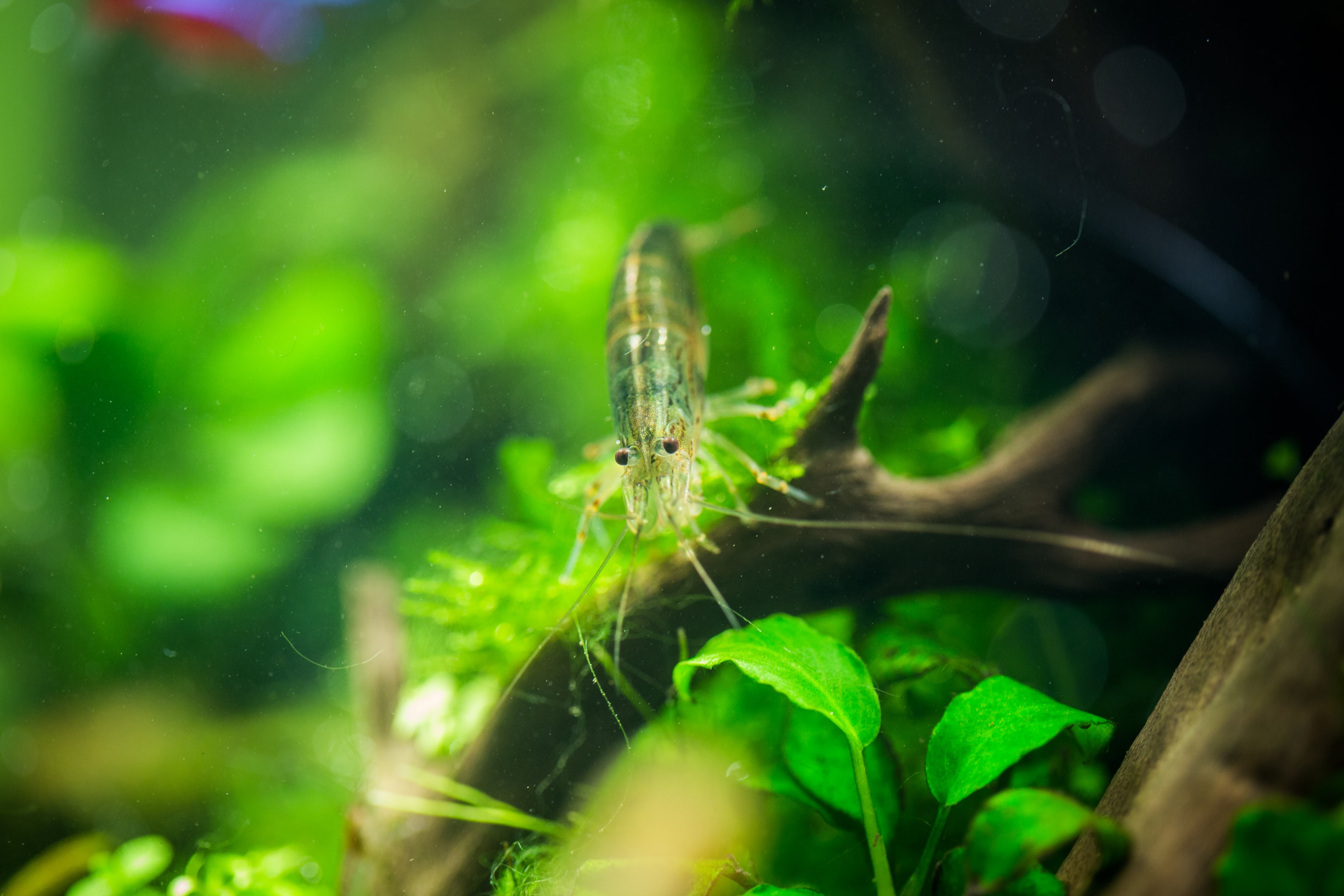
Filtration Systems: Key to Self-Cleaning
A high-quality filter is the backbone of any self cleaning fish tank. It removes fish waste, circulating water flow throughout the tank while supporting bacteria colonies that convert ammonia into harmless compounds. Multiple filters can be used in larger tanks to enhance the self cleaning feature and maintain balanced ecosystem dynamics.
Fish and shrimp benefit from consistent water flow provided by filters, while surface agitation from filtered currents increases oxygenation, supporting plant health and self sustaining aquarium stability. Proper LED light helps live plants thrive, while aquatic plants absorb excess nutrients from fish waste, reducing algae and the need for frequent water changes.
Maintenance becomes easier with the right filter, heater, and system setup. Fish enjoy clean, oxygen-rich water, shrimpgraze on biofilm, and plants flourish in nutrient-balanced conditions. This combination maximizes the self cleaning feature, reduces maintenance, and ensures a healthy, vibrant tank over time.
Lighting and Temperature Control
Proper LED light and temperature management are essential for a thriving self cleaning tank. Fish and shrimp rely on stable conditions, while live plants and aquatic plants need adequate LED light to perform photosynthesis, promoting plant health. In planted tanks, sufficient light encourages rapid nutrient uptake, which reduces algae growth and supports a self sustaining aquarium.
Heater placement is critical to maintain consistent water quality and prevent stress in sensitive fish species, such as betta fish, which require warmer conditions. Water flow and surface agitation from pumps help distribute heat evenly, oxygenate the tank, and enhance the self cleaning feature.
Low-tech setups may rely on natural LED light cycles and ambient temperature, while more advanced systemscombine LED light, heater, and timed water flow adjustments. By balancing these elements, fish, shrimp, and plantsthrive with minimal maintenance, making the tank both beautiful and efficient.
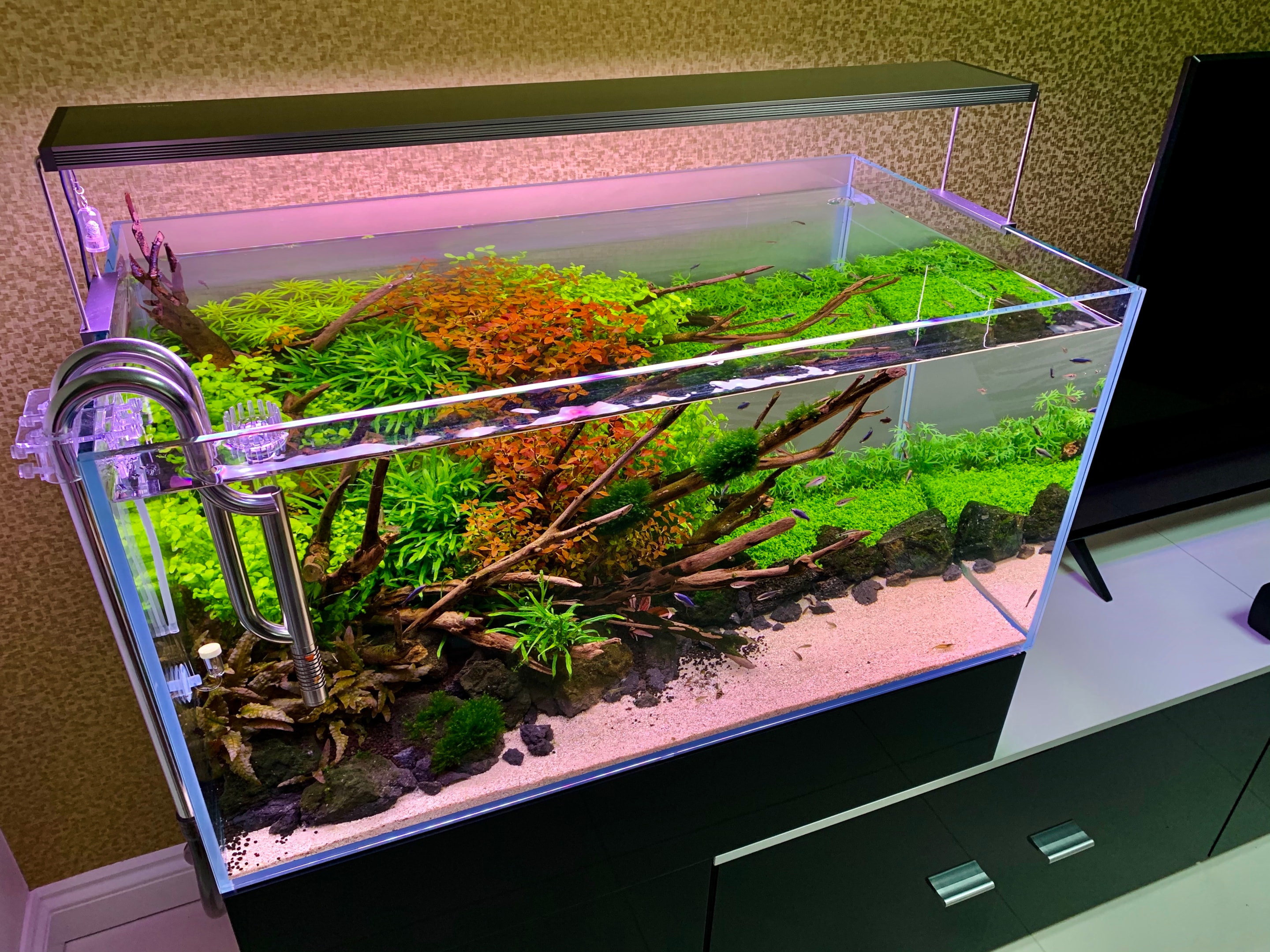
Feeding Strategies to Reduce Waste
Proper feeding is essential in a self cleaning tank to maintain water quality and minimize fish waste. Overfeeding can lead to excess nutrients, which promote algae growth and increase maintenance. In a planted tank, live plants and aquatic plants help absorb leftover food and fish waste, supporting a self sustaining aquarium.
When feeding betta fish, portion control is critical. Shrimp and other small fish also benefit from dispersed food, which encourages natural foraging and reduces accumulation on the substrate. Floating plants can help shade the surface, preventing uneaten food from settling and decomposing, which keeps the tank cleaner.
Using timed feeders with measured portions ensures consistent nutrition while maintaining the self cleaning feature. Combined with proper LED light, heater, filters, and water flow, this strategy supports plant health, fish vitality, and a vibrant balanced ecosystem, minimizing frequent water changes.
Cleaning Protocols for an “Almost” Hands-Off Aquarium
Even a self cleaning tank requires occasional maintenance. Minimal interventions, such as gentle substrate vacuuming or partial water changes, help preserve water quality and prevent excess ammonia buildup. Fish, shrimp, and plantsthrive when routine maintenance is balanced with natural self cleaning processes.
Live plants, aquatic plants, and floating plants play a critical role in absorbing nutrients and controlling algae, supporting the self cleaning feature of the tank. Proper filters, LED light, and heater placement complement these natural mechanisms, reducing manual work and keeping fish stress-free.
In a planted tank, a combination of surface agitation, water flow, and selective pruning of plants ensures continued plant health and encourages a self sustaining aquarium. Betta fish, shrimp, and other fish benefit from this approach, while the tank remains visually appealing and easy to manage, minimizing the need for frequent water changes.
The Role of Beneficial Bacteria in a Self-Cleaning Tank
Bacteria are the unsung heroes of a self cleaning tank. They convert ammonia produced by fish waste into less harmful compounds, helping maintain water quality and reducing the need for frequent water changes. In planted tanks, bacteria work alongside live plants and aquatic plants to recycle nutrients, supporting a self sustaining aquarium.
A healthy population of bacteria establishes a balanced ecosystem. They colonize the substrate, filter, and surfaces of plants, assisting fish in thriving. Proper water flow and surface agitation ensure bacteria are evenly distributed, promoting the self cleaning feature of the tank.
Shrimp and betta fish benefit from this biological filtration, as bacteria help stabilize ammonia and nutrients, supporting plant health and reducing algae growth. Coupled with correct LED light, heater, and filter setup, this system allows the self cleaning tank to operate efficiently with minimal maintenance, keeping fish, shrimp, and plants healthy.
CO2 Monitoring and Adjustments for Plant Health
Proper CO2 levels are critical for plant health in a self cleaning fish tank. Live plants and aquatic plants absorb nutrients and ammonia more effectively when CO2 is adequate, reducing algae growth and supporting a self sustaining aquarium.
Monitoring CO2 ensures plants receive enough gas for photosynthesis without harming sensitive fish, including betta fish. Proper water flow, surface agitation, and LED light balance light and gas distribution, enhancing the self cleaning feature. Heater placement maintains temperature, which is crucial for fish, shrimp, and bacterial activity.
Adjustments can be made using pressurized CO2 systems or DIY methods, always considering aquatic plants, floating plants, and live plants in the tank. Combined with regular water changes, filters, and controlled LED light, this approach keeps the tank visually appealing, maintains a balanced ecosystem, and allows the self cleaning tank to thrive with minimal maintenance.
Algae Management Without Chemicals
Managing algae in a self cleaning fish tank is essential for maintaining water quality and plant health. Live plants and aquatic plants absorb excess nutrients, reducing the likelihood of algae overgrowth. Floating plants help shade the surface, limiting light that fuels algae, while fish and shrimp naturally graze on smaller blooms, supporting the self cleaning feature.
Proper LED light scheduling and intensity are key. Excess light promotes algae, while insufficient light can hinder plant health in a planted tank. Maintaining surface agitation and water flow ensures even nutrient distribution and oxygenation, supporting a self sustaining aquarium.
Incorporating filters, heater, and a healthy bacteria population further stabilizes the tank. Regular but minimal water changes combined with careful stocking of fish, shrimp, and plants help keep algae under control, ensuring a visually appealing, balanced tank with minimal maintenance.
Troubleshooting Common Problems
Even in a self cleaning tank, issues may arise. High ammonia levels or excessive fish waste can destabilize water quality, affecting fish, shrimp, and plants. LED light intensity, heater settings, and surface agitation must be monitored to maintain a balanced ecosystem.
For planted tanks, weak plant health often signals nutrient deficiencies or inadequate LED light. Incorporating live plants, aquatic plants, and floating plants helps absorb nutrients, while filters, bacteria, and proper water flowstabilize the self cleaning feature. Betta fish and other sensitive fish require careful observation to avoid stress.
Troubleshooting includes adjusting LED light, heater, filters, and water changes, ensuring fish, shrimp, and plantsremain healthy. A well-designed self sustaining aquarium with planted tank elements, sand, and properly managed surface conditions minimizes problems, keeping the self cleaning tank efficient and low-maintenance.
Conclusion: The Future of a Self Cleaning Tank
A well-designed self cleaning tank combines fish, plants, shrimp, live plants, aquatic plants, and floating plantswith proper LED light, heater, filters, water flow, and surface agitation. These elements work together to create a self sustaining aquarium with minimal maintenance, excellent plant health, and high water quality.
Modern planted tanks benefit from automated self cleaning features, water changes, and carefully balanced nutrients. Fish waste is processed efficiently by bacteria, while fish and shrimp interact naturally with the tankecosystem. A balanced ecosystem ensures that algae growth is controlled, plants thrive, and fish remain healthy and active.
Embracing self cleaning aquarium technology allows both beginners and experienced hobbyists to enjoy vibrant fish tanks with reduced effort. By combining self cleaning features, proper LED light, heater, and filters, and the natural support of plants, shrimp, and fish, the self cleaning tank becomes a visually stunning, efficient, and sustainable self sustaining aquarium for years of enjoyment.



